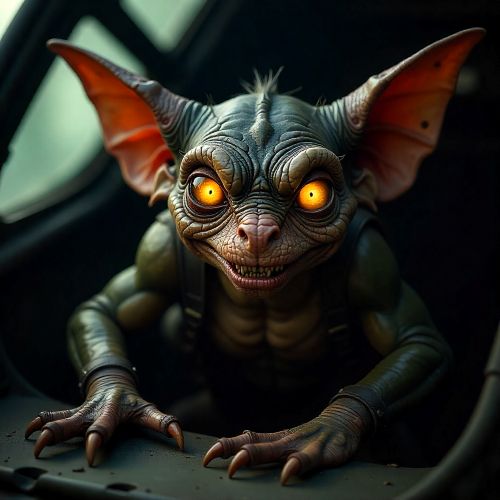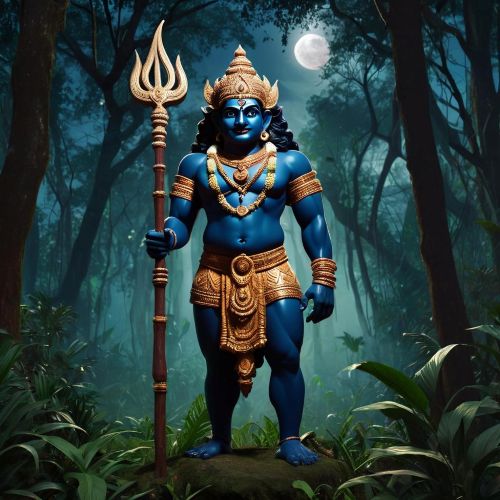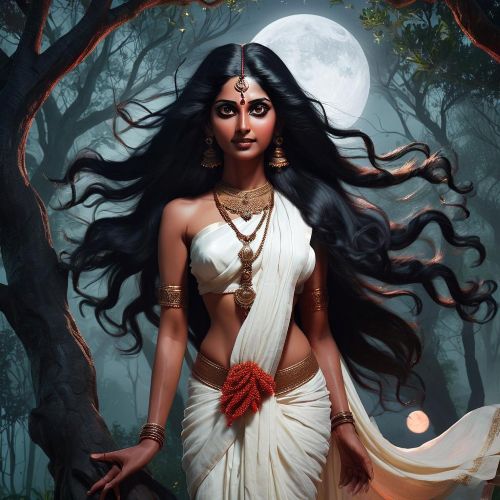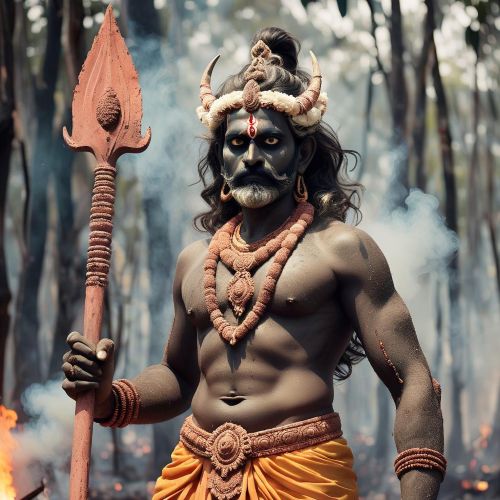Baak : The Water Demon
Listen
At a glance
| Description | |
|---|---|
| Origin | Indian Mythology |
| Classification | Spirits |
| Family Members | N/A |
| Region | India |
| Associated With | Evil, Shapeshifting |
Baak
Introduction
Baak, a malevolent water spirit from Assamese folklore, holds a chilling place in the mythology of Northeast India. Rooted in the rural culture of Assam, this ghostly being is said to haunt ponds, rivers, and lakes, often targeting fishermen or unsuspecting villagers. What makes the Baak particularly terrifying is its deceptive nature—it can appear as someone familiar, luring victims to watery graves. Over generations, Baak has become a symbol of hidden dangers and the supernatural unpredictability of nature, maintaining its fearsome presence in both oral storytelling and modern interpretations.
Physical Traits
Descriptions of Baak paint a vivid and unsettling image. It’s frequently portrayed as a tall, gaunt figure with an unnatural lankiness, limbs too long for a human, and skin that looks like it’s been soaking underwater for too long. Covered in moss and algae, the creature blends seamlessly with its aquatic surroundings. Some say it walks with a limp or distorted gait, while others claim its eyes glow faintly in the dark. The overall effect is deeply uncanny—close enough to a human to be mistaken for one in dim light, but clearly something far more sinister when seen up close.
Family
In contrast to divine beings of Indian mythology who often belong to vast familial lineages, Baak is an isolated creature. It has no known parentage or offspring, nor any association with established mythological figures. Instead, it exists independently within folklore, often believed to be the restless soul of a person who drowned under mysterious or violent circumstances. This detachment from divine genealogy makes Baak more of a spectral anomaly—something born of local fear and tragedy, not divine mythos. Its solitary nature adds to the eeriness, as it moves alone through the stillness of Assam’s waters.
Other names
While widely known as Baak, the creature is also referred to by variations such as Bak or Ghorabak depending on the region within Assam. These different names, often influenced by local dialects or community traditions, reflect the widespread reach of the legend. Despite the linguistic changes, the essence of the creature remains the same—an ominous, shape-shifting water ghost that thrives on fear and deception. These subtle regional distinctions serve as cultural markers, showing how folklore adapts while preserving its core message.
Powers and Abilities
Baak’s fearsome reputation is rooted in its formidable set of supernatural powers. Chief among them is shapeshifting—it can seamlessly take on the form of a person it has either killed or intends to deceive. In this disguise, it fools family members and friends, continuing the victim’s life until its true nature is exposed. This unsettling ability makes it a master manipulator.
Equally terrifying is its power to mimic voices. Baak can call out to people using the exact tone and accent of someone they trust, drawing them out to lonely waters. It is also said to be capable of creating illusions, altering a person’s perception of reality, making it harder to identify the danger until it’s too late.
Legends also speak of Baak’s voracious appetite for raw fish, which sometimes leads to unexplained thefts from fishermen’s boats. In some darker stories, it is even said to possess its victim, living on as a sinister parasite inside their body. Folklore offers a few protections—ritual chants, torn fishing nets, or certain talismans said to confuse or ward off the spirit.
Modern Day Influence
Baak’s influence has extended far beyond the quiet village ponds where the stories first originated. Today, it lives on in regional literature, horror fiction, films, and even internet storytelling formats. Writers have reimagined Baak in new narratives, such as Neil D’Silva’s Baak: A Desi Horror Story, which reinvents the creature for a contemporary audience while staying true to its roots. These modern renditions keep the legend alive, bridging the gap between old-world folklore and new-age horror.
In cinema, the idea of a malevolent shapeshifter tied to water has inspired characters in regional Indian films, sometimes directly referencing Baak, other times subtly nodding to its myth through visuals and themes of deception, aquatic fear, and identity theft. The Tamil-language film Aranmanai 4, though not set in Assam, explores similar spectral motifs, showing the cultural flexibility of Baak-like entities in Indian horror.
Educationally and culturally, Baak appears in Assamese folk plays, school storytelling sessions, and museum exhibits on regional beliefs. Teachers and parents use the myth as a tool to teach children about the dangers of water bodies—transforming a terrifying story into a life lesson wrapped in folklore.
On social media platforms like YouTube and Instagram, short horror reels and comic-style illustrations depict the Baak for a new generation, many of whom may never have heard of it otherwise. It’s part of a broader resurgence in interest around local legends, particularly as creators seek non-Western myths to explore in literature, video games, and streaming content.
Related Images
Source
Bhattacharjee, K. (2023). Folklore as Discourse: The Legends of Assam. Guwahati: Assam Folklore Press.
Rajkhowa, B. (2022). Assamese Demonology: Spirits and Superstitions. Assam University Press.
Wikipedia contributors. (n.d.). Baak (Assamese folklore). Wikipedia. Retrieved June 6, 2025, from https://en.wikipedia.org/wiki/Baak_(Assamese_folklore)
Enroute Indian History. (2023, November 1). Into the deep waters: Baak, the water demon of Assam. https://enrouteindianhistory.com/baak-water-demon-assam
Folkloreum. (2024, September 30). Baak: The water demon from Assamese folklore. https://www.folkloreum.com/baak-water-demon-assamese-folklore
Sentinel Assam. (2024, January 7). The folklore of Assamese ghosts and spirits: A brief study. https://www.sentinelassam.com/ghosts-and-spirits-assam-folklore
Semantics Scholar. (2024). Powers and abilities of Baak. Powerlisting Wiki. Retrieved June 6, 2025, from https://powerlisting.fandom.com/wiki/Baak_(Assamese_Folklore)
WorldAuthors.Org. (2025, January 6). The mysterious Baak of Assamese folklore. https://worldauthors.org/baak-assamese-folklore
Frequently Asked Questions
What is lorem Ipsum?
I am text block. Click edit button to change this text. Lorem ipsum dolor sit amet, consectetur adipiscing elit. Ut elit tellus, luctus nec ullamcorper mattis, pulvinar dapibus leo.
What is lorem Ipsum?
I am text block. Click edit button to change this text. Lorem ipsum dolor sit amet, consectetur adipiscing elit. Ut elit tellus, luctus nec ullamcorper mattis, pulvinar dapibus leo.
What is lorem Ipsum?
I am text block. Click edit button to change this text. Lorem ipsum dolor sit amet, consectetur adipiscing elit. Ut elit tellus, luctus nec ullamcorper mattis, pulvinar dapibus leo.
What is lorem Ipsum?
I am text block. Click edit button to change this text. Lorem ipsum dolor sit amet, consectetur adipiscing elit. Ut elit tellus, luctus nec ullamcorper mattis, pulvinar dapibus leo.
What is lorem Ipsum?
I am text block. Click edit button to change this text. Lorem ipsum dolor sit amet, consectetur adipiscing elit. Ut elit tellus, luctus nec ullamcorper mattis, pulvinar dapibus leo.











